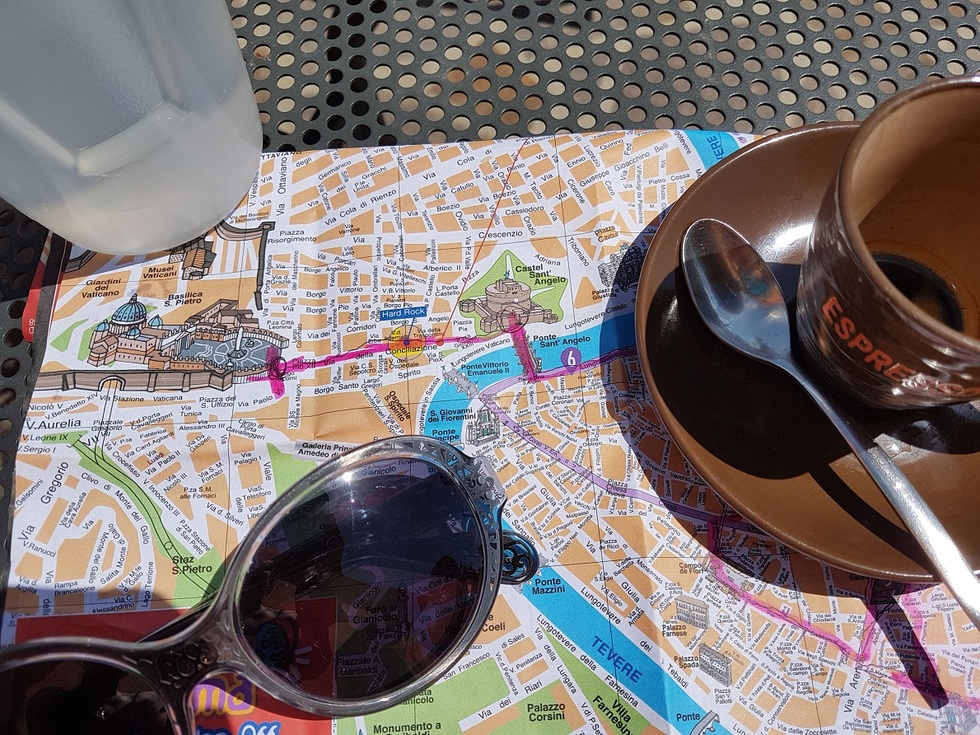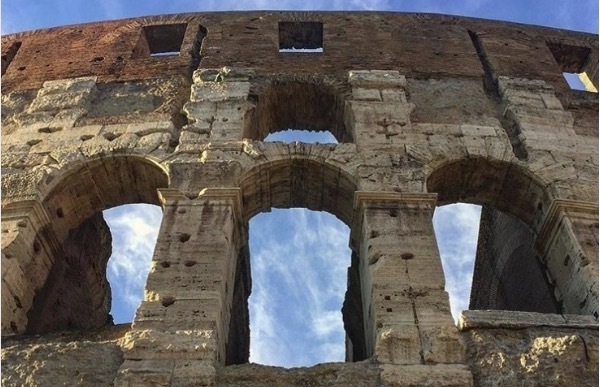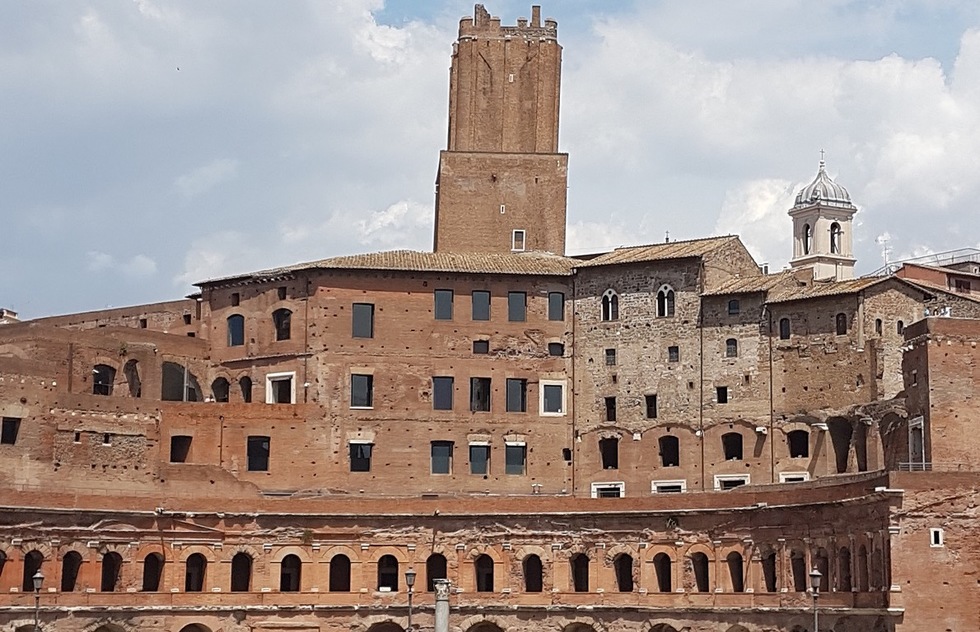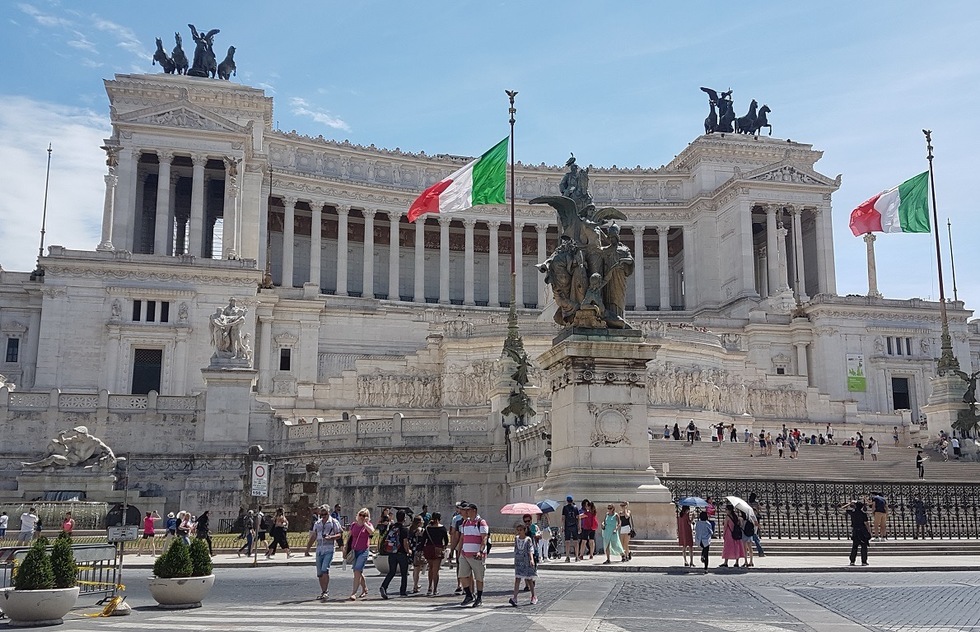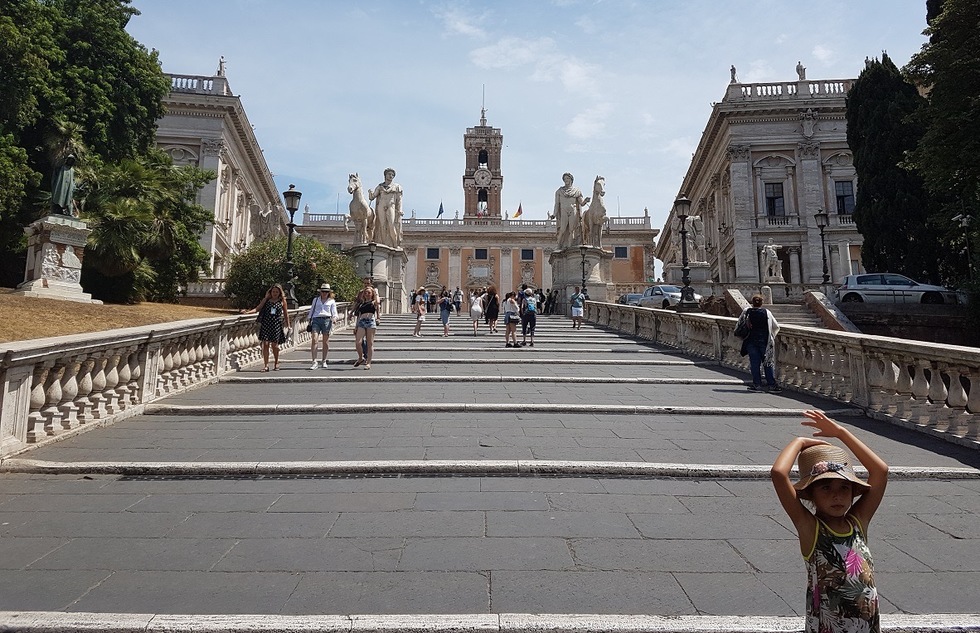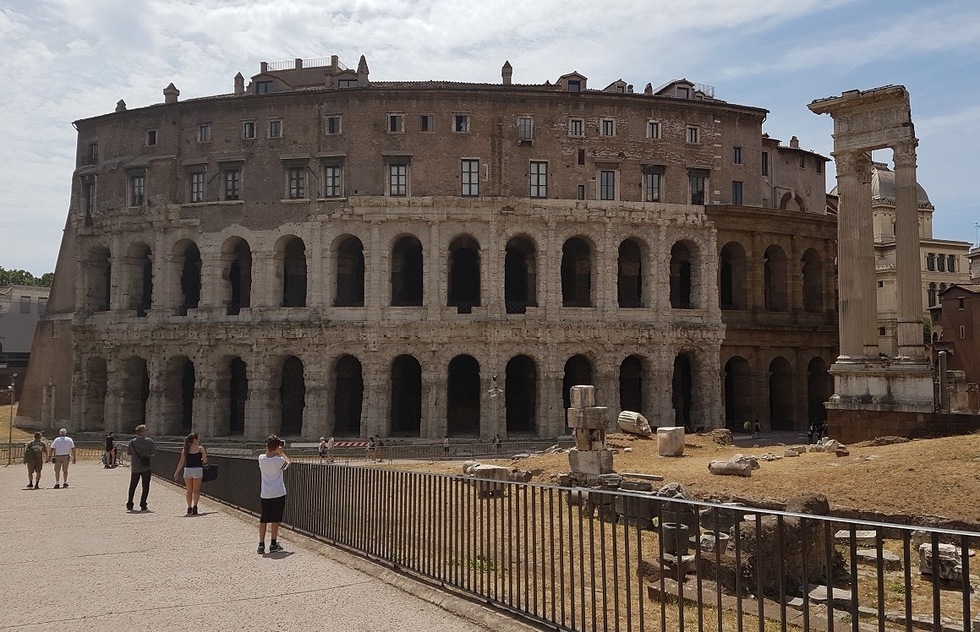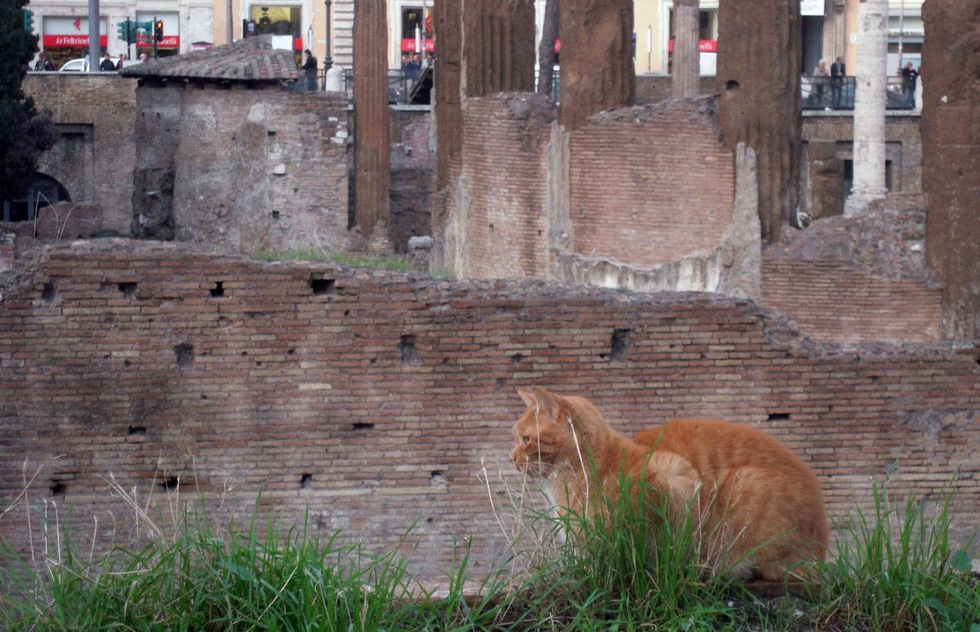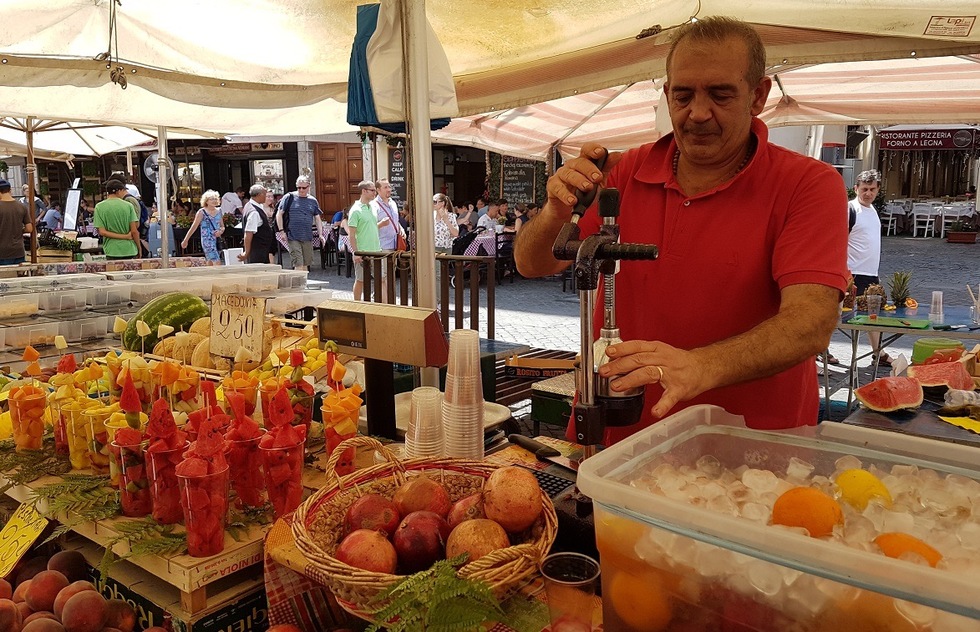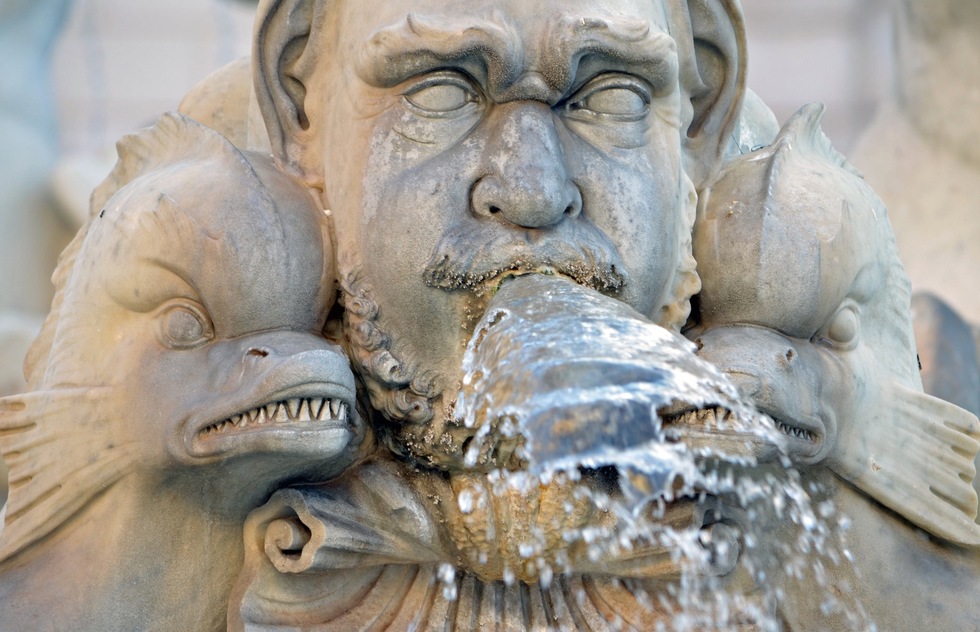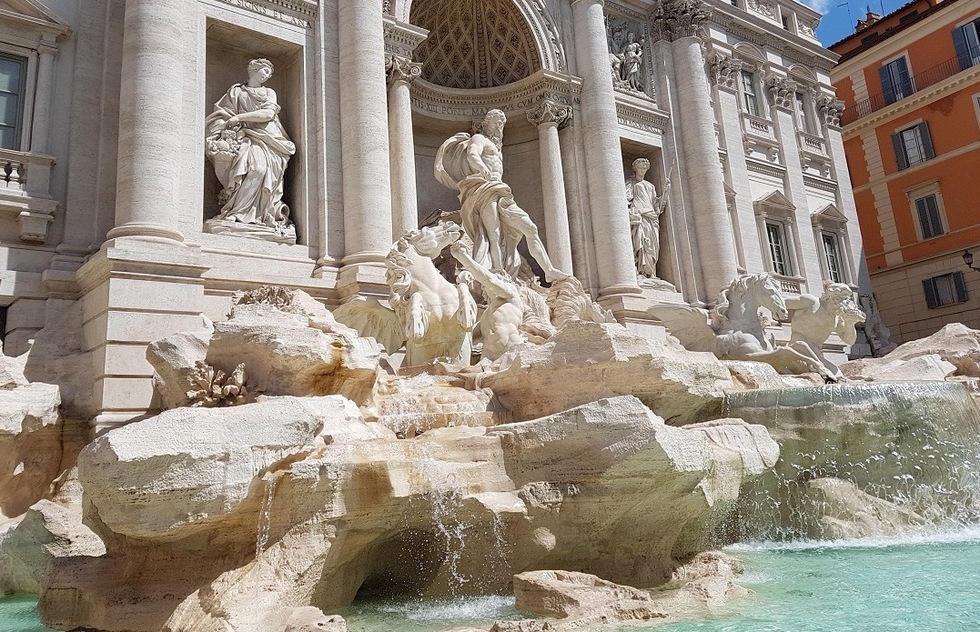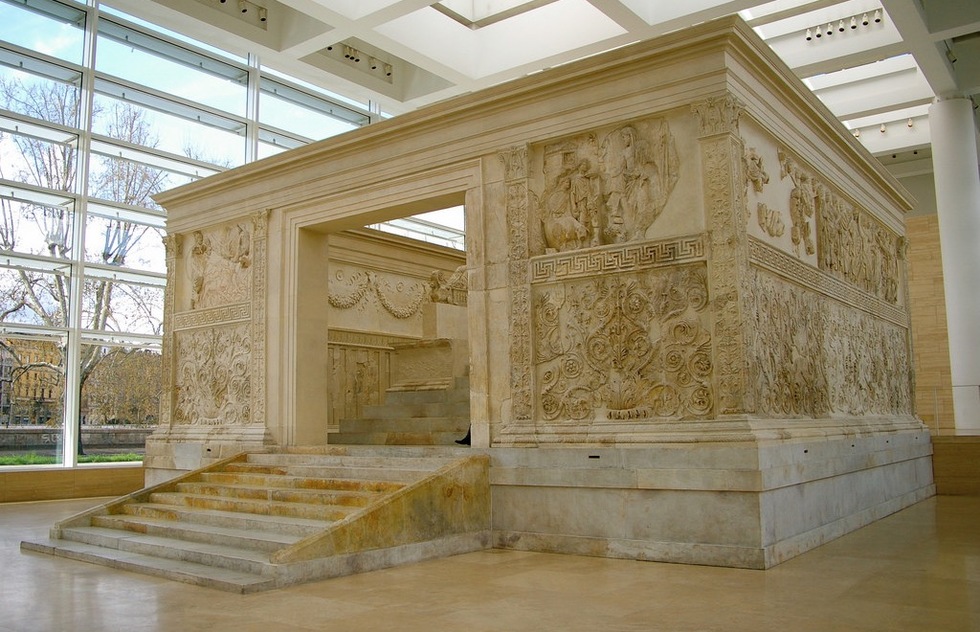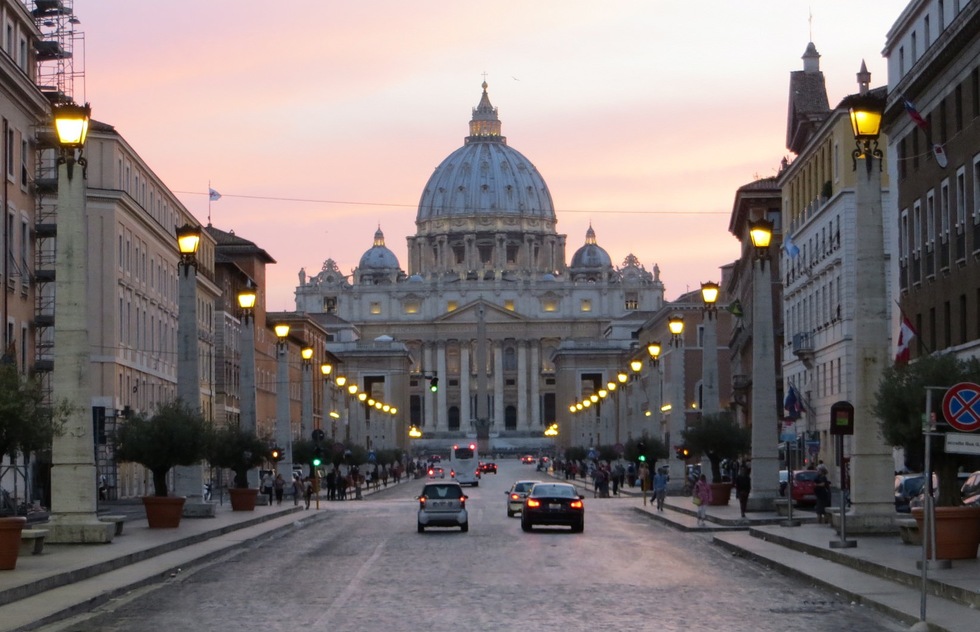Introducing the Perfect One-Day Walking Tour of Rome
By Elizabeth HeathForget the old cliché of Rome not being built in a day. If you’ve only got a day to spare, you can absolutely see the best of Rome. Unlike other European capitals, Rome has a touristic area that's fairly compact and most of it can be covered on a stroll.
To take this self-guided tour of the city's top attractions, you'll need to get an early start on the day, you'll need to be okay with covering a lot of ground (though we'll take frequent breaks to refuel with pizza or gelato), and you'll have to content yourself with some atmosphere and a quick photo op. Alas, there’s no time budgeted for tours of the Colosseum, St. Peter’s Basilica, or the Vatican Museums—but we'll go past all of them. If you have a limited amount of time and one of those sights is a must-see, figure on working it into the beginning or end of your day.
With that, fill up your water bottle, grab your map or smartphone, and we’ll meet you at . . .
Whether you’re seeing it for the first time or the fiftieth, the Colosseum never fails to elicit awe. It’s such an iconic part of the city that it’s the very symbol of Rome. Built over an artificial lake that was once part of the Domus Aurea, the vast palace of despotic Emperor Nero, construction began on the Flavian Amphitheatre, or Colosseum, around 70 A.D. and was completed by 80 or 81 A.D. The 4-level amphitheater could hold up to 80,000 people, who came for blood sports in the form of gladiatorial matches, mock naval battles, and wild animal fights and hunts. Fire, earthquakes, and the pilfering of materials has left the Colosseum an asymmetrical shell of its former self, but it still impresses with its sheer size and dark history of wanton bloodshed and violence.
Make a complete loop around the outside of the structure, passing the Arch of Constantine, dedicated in 315 A.D. to Rome’s first Christian emperor. Then head up Via dei Fori Imperiali, staying to the left-hand side of the street.
When Mussolini ordered the construction of Via dei Fori Imperiali, the triumphant avenue that was built in honor of Adolf Hitler’s visit to Rome in 1938, it meant plowing a wide swath of destruction through the Imperial Forums, which were once a somewhat cohesive complex. They now lay divided on either side (and underneath) the wide avenue. Start on the left-hand side, passing the massive hulk of the Basilica of Maxentius (in Ancient Rome, a basilica was a courthouse or public assembly hall). Walk as far as the Forum of Caesar, then cross the street to take in the cluster of monuments and buildings commissioned by Emperor Trajan (ruled 98 to 117 AD), including Trajan’s Forum and the semicircular Trajan’s Market (pictured above), which once functioned like an ancient shopping mall. You can’t miss Trajan’s Column, the 115-foot (35-meter) cylindrical column built to commemorate and illustrate the emperor’s victory in the Dacian Wars (in what is now Romania).
After craning your neck at the column, cross the street again to take in the waaaay over-the-top…
Completed in 1925, Il Vittoriano was built with several functions in mind: to honor Vittorio Emanuele II, the first king of united Italy, to memorialize Italian soldiers killed in World War I, and to serve as the Altare della Patria (Altar of the Fatherland), a massive physical monument to help ground a fledgling nation. It's massive, garish, and meant to overwhelm. Its local nicknames liken it to a wedding cake, a typewriter, and a set of false teeth. In other words, it’s not Rome’s best-loved monument. But it’s a landmark nonetheless, and a transportation hub if you’re catching buses to just about anywhere in the city.
From the Vittoriano side of the street, wind around the monument, passing a steep set of stairs. You’ll then head up the Cordonata, the wide, sloping stairs (designed so horses could navigate them) that lead up to…
At the top of the stairs, you’re standing on a piazza designed by Michelangelo and flanked by two palaces—now both part of the Capitoline Museums, also designed by the Renaissance master. A bronze statue of Marcus Aurelius on horseback is a reproduction of the original (now inside the museum). The Capitoline Hill itself—one of the legendary seven hills of Rome—has played an integral role in the city’s development as far back at the 8th century B.C.
The stately ocher and marble palace ahead of you is the Rome City Hall. Walk around the left side of it for a sweeping view of the ruins of the Roman Forum. The 203 A.D. Arch of Septimius Servius is directly in front of you. To the right of it sprawl the ruins of the Basilica Julia, The House of the Vestal Virgins, and further on, the rise of the Palatine Hill.
For another view of the Forum and a closer look at the Palatine, walk back around City Hall and off to its right. Then head back down the Cordonata, cross the street, and take a left until you see…
It looks a lot like the Colosseum, and that’s because that infinitely more famous landmark was modeled on this theater intended for dramatic performances, which was initiated by Julius Caesar but not completed until 13 A.D., more than 30 years after his assassination. Its arched façade and network of tunnels and ramps served as the archetype for Roman performance spaces and arenas throughout the Empire. In the Middle Ages and Renaissance, palaces were built over the theater ruins—they’re now some of the city’s priciest real estate.
Passing to the right of the theater, you’ll come upon the Portico of Ottavia on your right, with its partial temple façade, medieval additions, and an 8th-century church behind it. This is also the entrance to…
The mostly pedestrian Via del Portico d'Ottavia runs through the Roman Ghetto, where Rome’s Jewish population was forced to live following a papal decree in 1555. The quarter was locked at night, and its residents lived in squalid conditions. It wasn’t until 1870 that the walls came down and Jews were granted full citizenship. When the Nazis occupied Rome in 1943, more than 2,000 Roman Jews were deported, most to Auschwitz in Poland. Only a handful would return. Today, the ghetto is known for restaurants and bakeries serving traditional Roman-Jewish fare. Take a right on windy Via di S. Ambrogio, and walk until you come to the whimsical Fontana delle Tartarughe (The Turtle Fountain), which once supplied drinking water to the ghetto.
Continue on Via Paganica, cross Via delle Botteghe Oscura, and you’ll gaze down at the jumble of ruins that is…
With trams, buses, cars, and scooters buzzing around it day and night, the Largo di Torre Argentina really exemplifies how the ancient exists among the modern in Rome, and how the city is built on layers and layers of history. The ruins of four temples, the oldest dating to the 4th century BC, are laid out in a row along a street paved with large, smooth travertine stone. The temples abut remnants of the Theatre of Pompey where, on March 15 (the Ides of March), 44 B.C., Julius Caesar was assassinated. You may not be gazing at the very spot where the fateful stabbing took place, but archaeologists believe it happened in or near this square block. And those lazy cats basking in the sun on the ruins? They’re residents of a sanctuary for strays. You can even arrange to adopt one if you’d like.
Walk around three sides of the Largo, and follow the tram tracks along Via Arenula. Make a right at Piazza Benedetto Cairoli, which turns into Via dei Giubbonari. Do some window-shopping until the street opens…
Colorful and chaotic, Rome’s most photographed produce market was once the site of public executions. So in that sense, it’s a bit safer now than it used to be, especially if you’re a philosopher or a heretic. Every morning from Monday to Saturday, the Campo fills with stalls selling gorgeously displayed fruit and vegetables, spices, cheese, charcuterie, and fresh juice. In the evenings, after the stalls have packed it up, the piazza is lined with restaurants of every quality, all with patio dining. Campo is a great place for people-watching, but do watch your purse or wallet while you’re here.
Exit the piazza at Via Dei Baullari, and follow it to busy Corso Vittorio Emanuele II. Cross the street at the crosswalk, then continue briefly down narrow Via della Cuccagna, which opens onto majestic...
This grand piazza, lined with elegant palazzos (now mostly pricey vacation rentals), follows the oval shape of the 1st-century A.D. Stadium of Domitian, over which it was built. It’s dominated by Bernini’s Fountain of the Four Rivers, known to many as a pivotal location in Dan Brown’s Angels & Demons. Day and night, Piazza Navona is lined with overpriced restaurants—but with views that are hard to top—and teems with unlicensed souvenir vendors, mimes, and other street performers.
Exit the piazza due east on Via del Salvatore, which becomes Via Giustiniani, which opens onto Piazza del Rotunda and…
Nothing beats the wow factor of stumbling out of a dark centro storico alley, turning to the south end of Piazza della Rotunda and setting sights on the Pantheon. The original Pantheon was built at the beginning of the 1st century AD; the current building was completed by Emperor Hadrian around 126 AD. Do go inside here, as it’s free and there’s never a line. You’re now standing in a perfect sphere resting on a cylinder, which supports the world’s largest unreinforced concrete dome (pictured above). Gaze up to the nearly 26-foot (7.8m)-wide oculus, the building’s only source of natural light. The tomb of King Vittorio Emanuele II is here, as is that of Renaissance painter Raphael.
From the northeast corner of Piazza della Rotunda, head east on Via dei Pastini, which becomes Via di Pietra before ending at Via del Corso. Cross Corso and continue on Via delle Muratte until you come to…
A relatively new kid on the very old block, this famous Baroque waterwork was started in 1732 and completed 30 years later. The water that pours from it comes from an ancient source—the Acqua Vergine, a 1st-century AD aqueduct that still transports clean drinking water into the city. It’s customary to throw a coin into the Trevi by tossing it with your right hand over your left shoulder—this is said to guarantee that you’ll return to Rome.
To the right of the fountain, walk along Via della Stamperia until it crosses Via del Tritone. Make a short diagonal jog on Via del Nazareno, then go right on Via di Sant'Andrea delle Fratte, which becomes Via di Propoganda before opening onto…
Completed in 1725, the 138 steps leading from the Spanish Embassy up to the Church of Trinità dei Monti are not that noteworthy from a historical point of view, but they sure are pretty to look at. At the foot of the stairs is the Baroque, boat-shaped Fontana della Barcaccia (Fountain of the Ugly Boat). Its water is said to be the sweetest in Rome; walk out on one of the two little stone platforms on either end of the fountain to have a sip or refill your water bottle.
From the Spanish Steps, head north on Via del Babuino, and take a left on Via Vittoria, which becomes Via del Pontifici when it crosses Corso. Soon on your left you’ll see the hulking mass of…
Subject to centuries of decay and closed to the public for decades, the circular mausoleum was once clad in marble and held the funerary urns of Emperor Augustus and several other emperors and noble family members. Across the street is the Museo dell'Ara Pacis, a sleek, ultramodern building that houses the Altar of Peace (pictured above). The elaborate stone altar frieze established the Julio-Claudian dynasty’s blood links to the founding of Rome, and to the gods themselves. The museum is interesting if you have time, but you can get a good look at the altar from outside, too.
From the west side of the museum, walk south along the shady Lungotevere Marzio as it curves and becomes Lungotevere Tor di Nona. Cross the river on sculpture-lined Ponte Sant’Angelo to…
For an idea of what the Mausoleum of Augustus might have looked like in its prime, cast your eyes on Castel Sant’Angelo, which had its origins as the 2nd-century AD Mausoleum of Hadrian. It was later used as a castle, a fortress, and a prison, as well as a hideaway for papal trysts. To the left of the castle, take note of the Passetto di Borgo, a raised, covered passageway that let popes travel from the Vatican to the fortress unseen, either to escape an invading army or for a clandestine meeting with a paramour. On top of the castle is a bronze statue of the Archangel Michael, for whom the castle is named. Puccini’s operatic heroine Tosca leaped to her death from its ramparts.
From the left of the castle, head along wide Via della Conciliazione. There’s no missing your final stop on this tour…
You’ll need an awfully wide-angled lens to capture the scale of one of the most majestic and sacred sites in all of Christendom. There’s been a church here since the 300s, but what stands today is a triumph of Renaissance architecture, capped by Michelangelo’s dome. Bernini’s circular, columned piazza was completed in 1667, at the height of the Baroque craze. It’s dominated by an Egyptian obelisk that was already in place when the area was the 1st-century AD Circus of Nero, the site of Roman games and executions, including that of Peter. Fountains to either side of the obelisk complete the symmetry, as do the 140 statues of saints that line the top of the piazza. If you want to send a postcard postmarked and stamped from the world’s tiniest independent state, the Vatican post office is on the left-hand side of the piazza.
And with that, your whirlwind walking tour is complete! At the foot of the piazza you’ll find a taxi stand—we say you’ve earned a ride back to your hotel. You’re also not far from the Ottaviano Metro stop, or walk back to Borgo Pio (next to Castel Sant’Angelo) for bus connections to central Rome.





